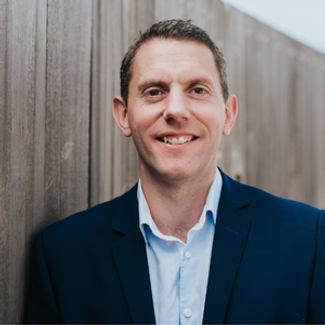As we enter the second half of 2023, people strategies have never been more important in the world of architecture and design. At FRAME Recruitment, we strive to keep you updated with the latest employment trends across the industry. To ensure you are staying ahead of the competition, we bring you the latest architecture and interior design recruitment market update.
This recruitment update covers:
What are candidates doing?
The movement of architecture and interior design professionals is habitually one of the initial signs of upward or downward trends in recruitment in architecture and design. We wanted to provide a closer look at what industry professionals have been doing in the last six months.
Applying for jobs
Over the last three months, we have seen candidates become increasingly active and are applying for jobs. Application levels have increased and there has been an uptick since the start of the year.
Candidates are proactively engaging with us, even in a skills-short market. We attribute this to an increased desire for better opportunities, including flexible working, career progression and improved compensation and benefits packages.
Passive candidates are open to discussing new jobs
The pool of passive candidates that we are headhunting is also more open to hearing about new opportunities. Even though they are not actively looking, they are interested to hear what opportunities are in the marketplace. They want to know what salaries clients are offering, what locations the most attractive jobs are in and what projects are on offer.
Considering counteroffers
It is becoming more common for candidates to consider counteroffers from their employers. Architects and designers know they have leverage when negotiating because the industry is skills short. If a good candidate comes to market, it is likely that they are meeting with many different companies and have at least two attractive offers to choose from.
If you are considering a counteroffer from your current employer, take a look at our advice on how to manage counteroffers here.
Moving fast
Candidates are not waiting around and are choosing to engage with the practices that value their time. People typically have more than one job offer to choose from and so, hiring managers need to be proactive in communicating their interest in a candidate. If they want to hire them, they need to make an offer as quickly as they can. We are in a market where there is no time for lengthy interview processes. You cannot leave the candidate in the dark and delay making the job offer.
What do candidates want?
Understanding what architecture and interior design professionals want can be crucial to getting the recruitment process and job offer right and ultimately being successful in hiring.
Hybrid working
The world of work has changed, and people have proven that they can still be productive and do their jobs efficiently from remote locations. Instead of fully remote working, people are wanting more flexibility in their jobs. The option to work a mix between home and the office is what is most desired, and it is much harder to recruit candidates into roles where this style of working is not offered. It is a key motivator for candidates to want to seek new job opportunities.
Work-life balance
People want better work-life balance. They are tired from burnout and unpaid overtime. The architecture and design sectors are notorious for long hours and late nights. However, people are fed up and work-life balance is becoming a priority.
Candidates are questioning the hours that come with a new job and are specifically asking for roles that do not require unpaid overtime. In particular, when we are presenting roles to passive candidates, one of the first questions they ask is “Does the role require overtime?”.
More people are prioritising better work-life balance over salary, even in a time when the cost of living is increasing.
Enhanced annual leave
Paired with hybrid working and work-life balance, people are valuing their time more than ever before. When we are discussing benefits packages with architecture and design professionals, they are demanding more annual leave than they are already receiving. People value their time and want to join companies that value their home life and priorities too.
Some candidates are even accepting a decrease in salary to gain more annual leave allowance. We have started to see a huge shift in what benefits matter to people and hiring managers will need to consider this when approaching talent.
Great job offers
In a skills-short market people’s expectations are higher, and they know that their skills are valuable. If someone is already happy in their current role, the potential new job opportunity needs to be worth it. We are past the times when making an offer that only includes a salary is enough. People’s expectations have changed and accelerated, they want to see a package, not just a salary.
Offers now include enhanced annual leave, hybrid working and career progression. The best hiring managers are presenting offers that include professional development and in-house training information too. This is an innovative and simple way to show potential employees you are invested in them right from the start.
For more information on job offers, read our advice on how to get your job offers accepted here.
What are clients doing?
Increasing hiring initiatives
Since the start of the year, hiring rates have increased rapidly. Clients want to execute projects and gain momentum. They need the best people in their teams to make this a reality. Even if they are not hiring right now, clients know that in a skills-short market, they need to plan. People strategies are at the forefront of people’s minds and the most proactive businesses know they cannot simply go to market when a need arises and expect to hire someone easily and quickly.
Fast responses and clear communication
The clients who are attracting the best candidates are proactively communicating with them and presenting job offers fast. We noted that candidates are not waiting around, and the most resourceful hiring managers are using this to their advantage to get ahead of the competition.
Counter offering
With the recruitment landscape hard to navigate and more competitive than ever, clients often have no choice but to entice their people to stay. Counteroffering employees that say they want to leave is becoming increasingly common, however, this is not always the best solution and could cost the business more in the future when the employee inevitably decides to leave again.
SMEs are growing
We have witnessed an increase in the number of SMEs who are hiring at a rapid pace. The industry is experiencing a lot of investment and more of the smaller players are working on a mixture of exciting projects in locations such as the Middle East and America. Therefore, they need to grow their teams to ensure project deadlines are met and to a high standard.
Hybrid working
The businesses that want the best talent in their teams know they need to listen to what candidates want. The most forward-thinking practices and studios have adopted hybrid working and know that it can be a great benefit to the productivity of their teams. Clients are also developing their remote leadership skills. Those that are failing to do so are also failing to keep up with what people want.
Offering unique benefits
With the competition for talent high, clients are looking for new ways to stand out as an employer of choice. Salaries and common benefits are no longer enough to attract people. Following the findings of the Architecture and Interior Design Salary Survey 2023, clients have advised us they are rethinking the benefits they offer employees. We have seen a rise in benefits focused on wellness initiatives, including subscriptions to apps like Calm, Headspace, and physical corporate wellness activities.
What do clients want?
It is important to understand what clients want and whether this correlates with what the people they are recruiting desire too.
Technical skills
Revit is a non-negotiable technical skill that clients are seeking in new architecture hires. More practices than not are using BIM software, requiring Revit skills to keep up with this adoption of digital design.
Similarly, FF&E, Management and Project Running experience are highly attractive to interior design hiring managers.
Our clients in both architecture and interior design want people who are proactive in upskilling themselves to meet industry demands.
Those looking to progress in their roles or negotiate more lucrative salary packages will be favourable to employers if they possess these technical skills and experience.
Well-rounded candidates
With such diversity in projects coming to market, architecture and design businesses want people who can offer a variety of soft skills and technical skills. They want well-round individuals who are open to being involved in each stage of the design process and collaborate with other team members effectively.
Loyalty and longevity
Our clients do not want to continuously rehire for their positions. When you lose an experienced employee, you also lose their knowledge and experience. Our clients want people who are going to be loyal and be with them for the long term. We are seeing different strategies to make this happen.
Market influences
No sector or discipline operates in silos and many market influences are impacting the employment and recruitment of architecture and interior design professionals.
Architecture fees
There is an ongoing debate on the level of fees architecture practices and interior design studios are charging their clients for projects. Construction costs have risen exponentially over the past few years and the fees that architecture and design practices are charging do not align with this.
Though practices want to keep costs down to offer the most competitive solution to their clients, it has impacted the cash flow for many teams. When costs get squeezed, compensation budgets for employees do too. This can limit employee pay rises and negatively impact employee retention rates. Pay rises can have a profound impact not only on how employees perceive their career and their employer but also on their overall quality of life.
Educational reform
There have been many discussions within the industry about what the route to becoming an architect will look like in the future. Many industry professionals believe that the current route is outdated because of the time it takes to qualify versus the salaries that an architect receives.
The educational costs of qualifying paired with the lengthy period of studying can make it an inaccessible career path to some individuals. Particularly for people who are seeking faster career progression or need to seek employment over studying due to financial reasons.
If new generations can pursue alternative career paths, whilst receiving better salaries and benefits, we could start to see a decline in the number of new architects coming into the profession. This poses a threat to the future workforce by creating skills gaps within the industry.
Not only will practices be competing against each other but they will be competing with other industries.
Artificial Intelligence (AI)
Our clients are already thinking about how AI could play a role in their businesses. AI is starting to make its way into the industry and the design process in many ways. Although at early stages, AI has the potential to assist architects and interior designers in generating more design options more quickly.
For example, professionals can simply input specific design requirements, budgets, site conditions and even materials, and the AI software will automatically generate a detailed design.
The implementation of AI can offer new opportunities for people to upskill themselves in their roles and close the current skills gap. It can also improve productivity and efficiency in the workplace, therefore having a positive impact. However, AI cannot understand every part of the design process, and people will still need to play a crucial role in using the technology.
Final thoughts
Our mission is to continually add value to our customers and the industry. We are honoured to share our thoughts and findings with the architecture and interior design community, and we take our responsibility very seriously.
We appreciate feedback and so if you would like to discuss any part of this recruitment update, we would love to hear from you.
FRAME loves to talk to Architecture and Interior Design Professionals from across the world.
Join the conversation with FRAME Recruitment
Follow FRAME Recruitment on LinkedIn, Facebook and Twitter for the very latest architecture and interior design news, updates, exclusive insights, and regular hot jobs.







